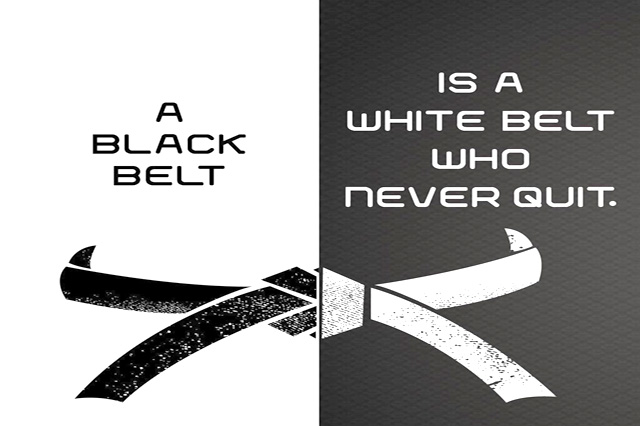Shaolin Kempo Karate Belt Levels: What Do They Mean?
The journey to becoming a Black belt takes time, talent, and dedication. On your way to achieving that prestigious martial arts belt rank, you’ll face challenges and opportunities for self-improvement. And, there will be certain expectations along the way that vary from belt to belt.
Each discipline has its own martial arts belt rank system. Let’s take a look at the belt level progression we use in our study of Shaolin Kempo Karate.
White Belt
In the words of Lewis Carroll, “Begin at the beginning.” As a white belt, you’ll be introduced to the fundamental concepts of Shaolin Kempo Karate, including close-handed strikes, basic kicks, the 8-point blocking system, your first four animal techniques, and your first form.
Yellow Belt
At this level, you’re expected to have shown some commitment to your practice of martial arts. You’ll add to your repertoire of hand strikes, kicks, and grabs, as well as begin exploring how to utilize your upper and lower body together for maximum effect.
Orange Belt
The orange belt rank will expose you to new ways of striking, namely with your fingers and forearms. You’ll learn to deliver kicks from different angles, and study more advanced footwork.
Purple Belt
Often jokingly called “the spinning belt,” purple belt moves focus on simultaneous movement and delivering power while in transition. You’ll also learn how to fall, roll, and use timing to defend yourself. This is the last belt level before you reach the advanced stages. At this rank, you should take time to reflect on how far you’ve come and rally your determination to go even further.
Blue Belt
As you become more advanced, you’ll spend more time at a given rank and receive more material than at prior belt levels. Once you’re a blue belt, you’ll be expected to start thinking more about the nuances of your movement.
Blue with Stripe Belt
At this rank, you’ll begin learning more complex forms and animal techniques. You should have an understanding of how each animal differs in movement and incorporate those strategies into other areas of your martial arts.
Green Belt
It’s takedown time! Green belts are taught proper trapping and takedown techniques, as well as a whole slew of new animal combinations.
Green with Stripe Belt
Think of it as Green Belt 2.0. You’ll focus on many of the same lessons learned in the previous rank, but now with an emphasis on using negative space to your advantage, confusing your opponents and making your movements more unpredictable.
Brown Belt
Once you’ve attained the rank of brown belt, new material will come more slowly. Instead, the emphasis will be on refining your skills and thinking critically about the philosophies behind martial arts.
Brown with Stripe Belt
The brown with stripe belt rank tests your endurance and dedication to see if you have what it takes to become a black belt. Commitment, ability, and contemplation are key.
Black Belt
Black belts know they are perpetual beginners. There is no end to the study of martial arts. There is no perfection. And, hopefully, you will never stop improving. Now it is time to go back to the beginning and see what lessons you can glean that you missed before.
What? Are you afraid you’re going to get too good?
-Master Alan, on extra practice

